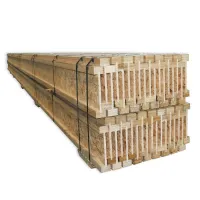Are I-joists stronger than timber?
I-joists and traditional timber (solid wood) are both commonly used in construction, each with its own set of advantages. The strength of these materials depends on various factors, and they serve different purposes in construction projects.
I-joists, or engineered wood I-beams, are composed of laminated wood strands or veneers, often oriented strand board (OSB), glued together to form the shape of an "I." These engineered joists offer several advantages:
Consistent Strength: I-joists are manufactured to precise specifications, providing consistent strength and minimizing variations that can be found in natural timber.
Long Spans: Due to their engineered design,Light weight I-joists can often span longer distances without the need for additional support, making them suitable for open floor plans and larger spaces.
Less Prone to Warping or Twisting: Engineered wood products, including I-joists, are less susceptible to warping or twisting compared to solid timber, providing stability over time.
Resource Efficiency: I-joists are often made from smaller, fast-growing trees, contributing to resource efficiency and reducing reliance on large-diameter timber.

Solid Timber:
Solid timber, or sawn lumber, is the traditional form of wood used in construction. Its strength is influenced by factors such as wood species, moisture content, and the specific grade of the lumber. Some characteristics of solid timber include:
Natural Variation: Solid timber exhibits natural variations in strength, density, and other properties depending on the tree species and growth conditions.
Aesthetic Appeal: Solid timber is often chosen for its natural aesthetic appeal, showcasing the beauty of wood grain. It is commonly used in exposed applications where its appearance is valued.
Local Sourcing: Timber is a renewable resource, and sourcing it locally can contribute to sustainable construction practices.
Strength Comparison:
The question of whether I-joists are "stronger" than timber is context-dependent. In terms of consistent strength, load-bearing capacity, and resistance to certain issues like warping, I-joists may have advantages. However, solid timber can offer strength and durability in its own right, and it is often preferred for its natural appearance and aesthetic qualities.
Conclusion:
Both I-joists and solid timber have their places in construction, and the choice between them depends on project requirements, design considerations, and personal preferences. Engineers and architects often consider factors such as load-bearing capacity, span requirements, and aesthetic goals when deciding between lvl I-joists and solid timber for a particular application. Each material has its strengths, and the appropriate choice will depend on the specific needs of the construction project.
354
0
0


Comments
All Comments (0)